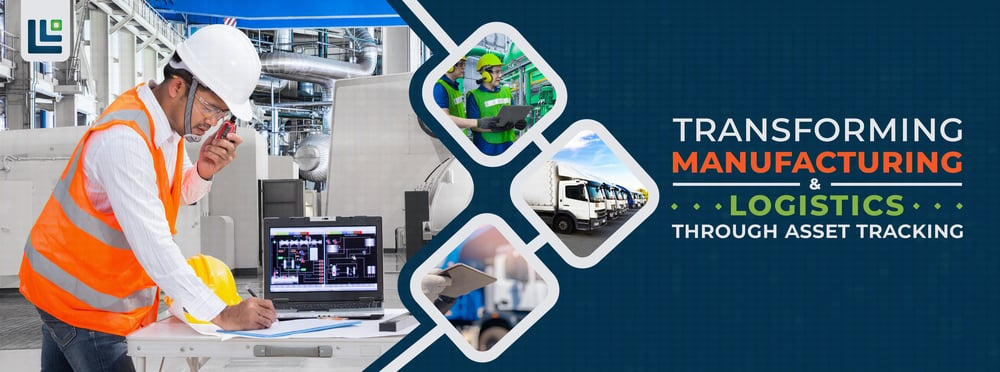With continual technological innovation, keeping up with the latest technology trends affecting your industry is essential. If you fail to recognize these trends or don’t take action to implement them, you may fall behind your competitors. There are tons of trends predicted to impact industries this year, and some are even trends from last year. We’ve narrowed all these technology trends down to the five predicted to have the most significant impact on industries. Take a look to understand their significance and how you can take action to avoid falling behind.
Velocity of Digitalization
Digitalization has been a trend for some time. The velocity of digitalization is only growing. Companies have found ways to digitize different parts of their daily processes, especially the supply chain. 2020 set off a series of supply chain disruptions that hurt companies, and ever since, they’ve been trying to recover and become better prepared for the future if these disruptions occur again. Customers are increasingly frustrated with companies' inability to deal with unforeseen circumstances and have become a big driver for companies digitalizing all processes within their supply chain. Everything from production processes to on-the-road logistics processes is being affected by digitalization.
The process of digitalization hasn’t been easy. At first, companies didn’t know where to start, so they chose different technologies for each part of their supply chain. They chose separate systems because they saw separate problems that needed to be addressed, like increased demand during a labor shortage. They used one technology solution for production, one for storing, and another for on-the-road visibility. This severely increased the usage cost and caused some confusion with so much going on. Now that companies are becoming better acquainted with location technology in their operations, they see the value of having an all-in-one solution centered around a single platform. They would rather have one solution that does it all so they can see all their data in one place instead of needing to switch platforms. This makes for easier decision-making and greater simplicity.
When this technology was first making headway, companies hesitated to invest because they didn’t understand how it worked. After multiple years of facing problems and testing their options, companies don’t want to spend as much time searching for the right solution anymore. Companies have claimed to spend six to eight months running pilots with multiple technology providers, wasting valuable time and money. Companies are now putting more trust in technology providers based on success stories from other customers. Proof of concept is now enough for companies to invest in the technology.
Sustainability Through Real-Time Visibility
Sustainability has been another trend seen for years that is still on the rise. The overall goal of sustainability efforts is to reduce waste where it’s possible. Whether or not a company makes sustainability efforts can determine whether or not some customers will purchase from them. Sustainability efforts come in different forms. One of the most well-known forms is the packaging of products. Consumers are doing research before purchasing to see if the package they’ll receive can be recycled, reused, or if it’s biodegradable. A lot of times, if the packaging isn’t sustainable, they’ll do their shopping elsewhere.
A push for sustainability has been seen in regulations being added by government agencies. The country as a whole wants companies to make sustainability a priority during operations. The Food Safety Modernization Act (FSMA), Distribution Integrity Management Programs (DIMP), and ISO 17025 are examples discussed a lot in recent months. Many of these regulations require increased supply chain visibility. Companies need to be able to ensure every stage of the supply chain, from production to delivery, is monitored to reduce as much waste as possible. This push for sustainability is transforming the supply chain from a linear model to a circular model. A circular model involves using reusable components rather than wasting them after each use. An example of this would be logistics companies using plastic pallets returned after each delivery instead of disposable ones.
Technology can be used to help companies become more sustainable by giving them visibility of their assets on the road. Asset tracking technology has sensors embedded to monitor the surrounding environment helping with temperature monitoring and reducing waste of temperature-sensitive items. Even though technology helps other industries improve their sustainability efforts, they themselves need to make sure they consider sustainability with their operations and products. For example, Link Labs has worked to make our solutions sustainable by increasing battery life from up to three years to up to seven years. We’ve even added a rechargeable battery option, so there is even less waste.
Join the AirFinder Difference!
- Innovation. Organizations can be freed up to innovate and bring more impactful products and services to market.
- Profitability. Increased profitability provides new opportunities to innovate and improve valuation.
- Digital Transformation. Discover competitive advantages, new revenue opportunities, improved customer relationships, and increased efficiency.
Rise of Industry 4.0
While industry 4.0 began back in 2011, it’s not going anywhere yet. It focuses heavily on automation and interconnectivity. Technology like artificial intelligence (AI) and machine learning (ML) have been big players pushing this forward. Recently, companies have recognized the benefits that these technologies can provide. For example, AI has been used in the past to help companies understand why a problem occurred so they can react and fix the issue. Now, companies can use AI to find the root cause of a problem. Moving from reactive to proactive is vital to finding success. Finding out about a bottleneck and fixing it is good, but figuring out why the bottleneck is occurring and addressing the underlying issue is better. When you use AI and ML, you gain upstream visibility to see dwell times at each station or even to accurately predict the arrival time. This level of data helps you to understand your operations on a deeper level. Instead of addressing surface-level issues as they occur, you find out what’s causing the issue so you can fix the root cause and prevent the issue from resurfacing.
Maturation of the IoT Industry
The IoT industry is starting to mature. Companies are finding their specialties in the market. Some companies specialize in firmware, others in hardware or UI. No matter your specialty, you’re not doing it all. The companies that are trying to do it all are slowly realizing that they can’t. There are parts of innovation that are relatively easy, but where companies struggle the most is what goes in between the edge and the cloud. Getting a clear data stream is more complicated than companies realize. Some of these DIY companies are stepping down because trying to do everything themselves is causing them to fall behind. Even prominent players like Google IoT Core can’t do everything themselves. With the market expanding as quickly as it is, most companies simply don’t have the resources to keep up.
So, what options do you have if you can’t do everything yourself and don’t want to step down? Partnerships. Getting a partner that can fill in the gaps doesn’t mean you’ve done something wrong; it means you’re making a wise decision for your company. Trying to do everything yourself eventually leads to failure, so find your specialty and work with another company specializing in something else you need. This way, you can do what you’re good at and continue to provide a great solution to your customers.
Convergence of Complex Technologies
Looking at technology from a global perspective changes a few things. Instead of focusing on what’s important to the region you’re familiar with, you have to consider what’s important worldwide. For example, LTE M was extremely popular in the United States at one point, but NB IoT was more popular in Europe. Nowadays, you can use either technology in either place, but it’s trends like that you need to be aware of when expanding globally.
Are You Prepared for These Trends?
A lot of these trends are rolling over from last year. Trends rolling over means changes around these trends are still happening rapidly. If you didn’t participate in these trends before, now is the time. Visit our website to learn how we’re participating in these trends and to learn about how our asset tracking technology can help you, book a demo with our team.




